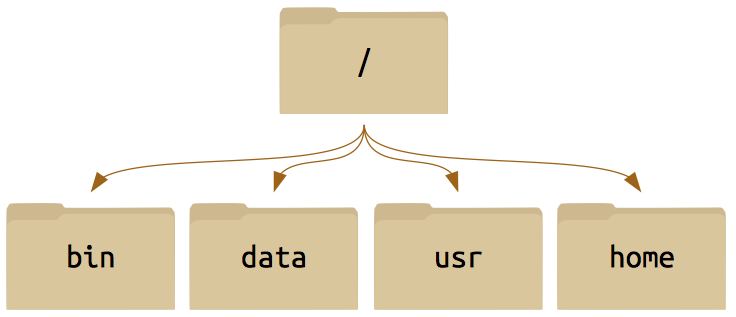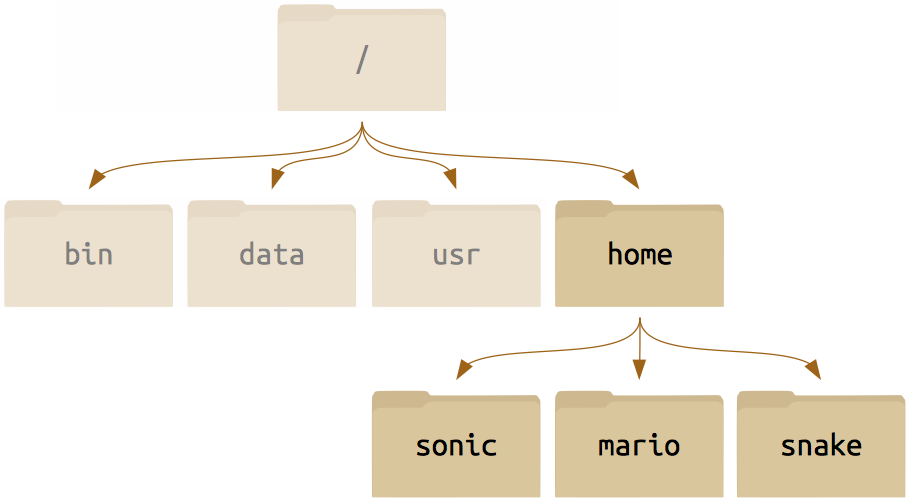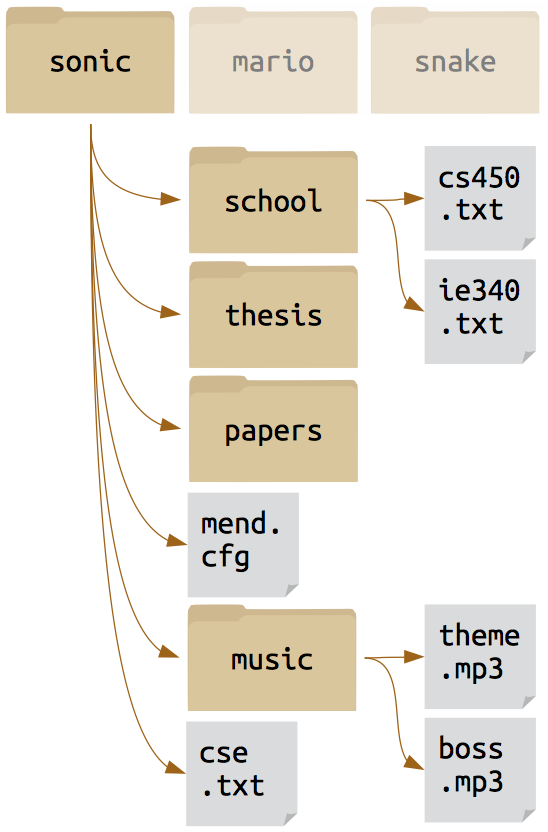
When moving around a linux system you will be encountered by files and directories. The linux system considers everything to be a file with directories being files that contain files. The following section will discuss how to file system is set up and how to navigate the file system.
The first thing we probably want to know is where are we within the file system. The command pwd will print the working directory. For example:
$ pwd
/home/<LoginID>It is important to note that the directory that is printed to the terminal starts with /. This refers to the root directory, or the outermost directory while everything after a / is a subdirectory. In this case the LoginID is a subdirectory of home and so on.
When refering to the location of a file or directory there are two ways in which you can refernce the path to the file. The absolute path refers to a file or directory from the root directory. The relative path refers to a file or directory from the current directory.

/./. There are many other standard directories on Unix-derived systems: /usr, /bin, /opt, etc.)
And then we can drill down all the way to something that perhaps looks more familiar to you, a home directory populated with files just like you may treat the My Documents folder on Windows.

To navigate this system on the command line (as opposed to in a file browser), you only need a few basic commands: pwd ,ls ,cd.
You already learned that pwd prints the working directory. To list the contents within a directory use the ls command. For example:
$ ls
theme.mp3 boss.mp3Often a command will take options or flags which begin with -. Type ls -l to print a long list of the contentes within a directory.
$ ls -l
total 2
drwx------. 2 LoginID ews 80 Aug 15 2015 boss.mp3
drwx------. 2 LoginID ews 80 Oct 6 2015 theme.mp3Other flags such as -a,-t, or -r display the same contents with some modifications (Refer to the man pages for a full list of all the flags). The -a flag will display all files including the hidden files.
$ ls -a
. boss.mp3 theme.mp3
.. .DS_StoreTo physically move from one directory to another you can use the cd command, as in change directory. This can be used in the following way:
$ cd sonicNotice that the current directory has changed. We can direct cd to a directory through an absolute path. For example:
$ cd /home/sonic/musicA few handy shortcuts when moving around the file system:
. refers to the current directory
.. refers to the directory above the current directory
~ refers to the home directory
Tab completion will become your best friend when using a linux system. When typing a path becomes tedious you can use tab completion to auto-complete the directory or file. This becomes especially useful for long paths and filenames.
| Contents | ⬅ Previous | Files and Directories | Next ➡ |